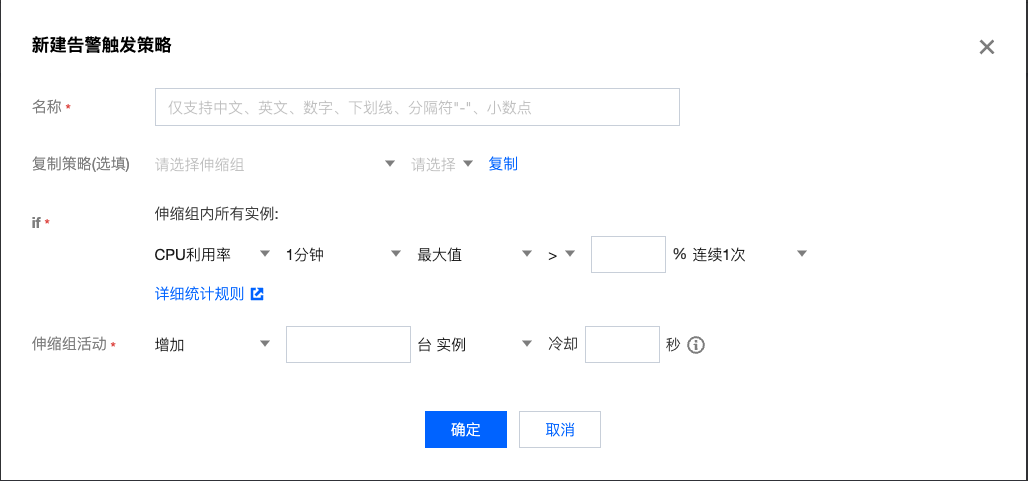步骤3:创建伸缩策略
最后更新时间:2024-01-08 17:53:29
操作场景
弹性伸缩组根据伸缩策略进行云服务器数量的增减:
创建定时任务,用于定时执行伸缩活动,您还可设置是否周期性执行。
创建告警触发策略,根据云监控指标(例如 CPU、内存使用率等)情况执行伸缩活动。
操作步骤
创建定时任务
如果您的负载变化情况是可以预知的,那么您可通过设置定时任务,对您的设备扩展活动进行规划。此功能可定时及周期性地自动增加或减少 CVM 实例,从而灵活应对业务负载变化,提高设备利用率,节省部署和实例成本。
1. 在 伸缩组 页面,选择伸缩组 ID 进入该伸缩组详情页。
2. 选择定时任务页签,并单击新建。如下图所示:

3. 在弹出的新建定时任务窗口中,指定定时任务名称、伸缩组活动和重复周期等信息。
4. 完成设置后单击确定,即可查看该定时任务。如下图所示:


创建告警触发策略
如果您希望根据 CVM 指标情况调整业务部署,那么您可通过自定义告警触发策略,对您的设备扩展活动进行规划。当业务负载使得指标到达阈值时,该策略将帮助您自动增加或减少 CVM 实例数量,从而灵活应对业务负载变化,提高设备利用率,节省部署和实例成本。
1. 在 伸缩组 页面,选择伸缩组 ID 进入该伸缩组详情页。
2. 选择告警触发策略页签,并单击新建。如下图所示:


3. 在弹出的新建告警触发策略窗口中,设置基于云监控性能指标(例如 CPU、内存、带宽等),自动为伸缩组增加或减少指定台数或指定百分比的 CVM 实例。
您还可通过复制策略(选填),直接复制已有伸缩组的已有策略到当前伸缩组。如下图所示:

4. 完成设置后单击确定,即可查看该告警触发策略。如下图所示:

文档反馈

